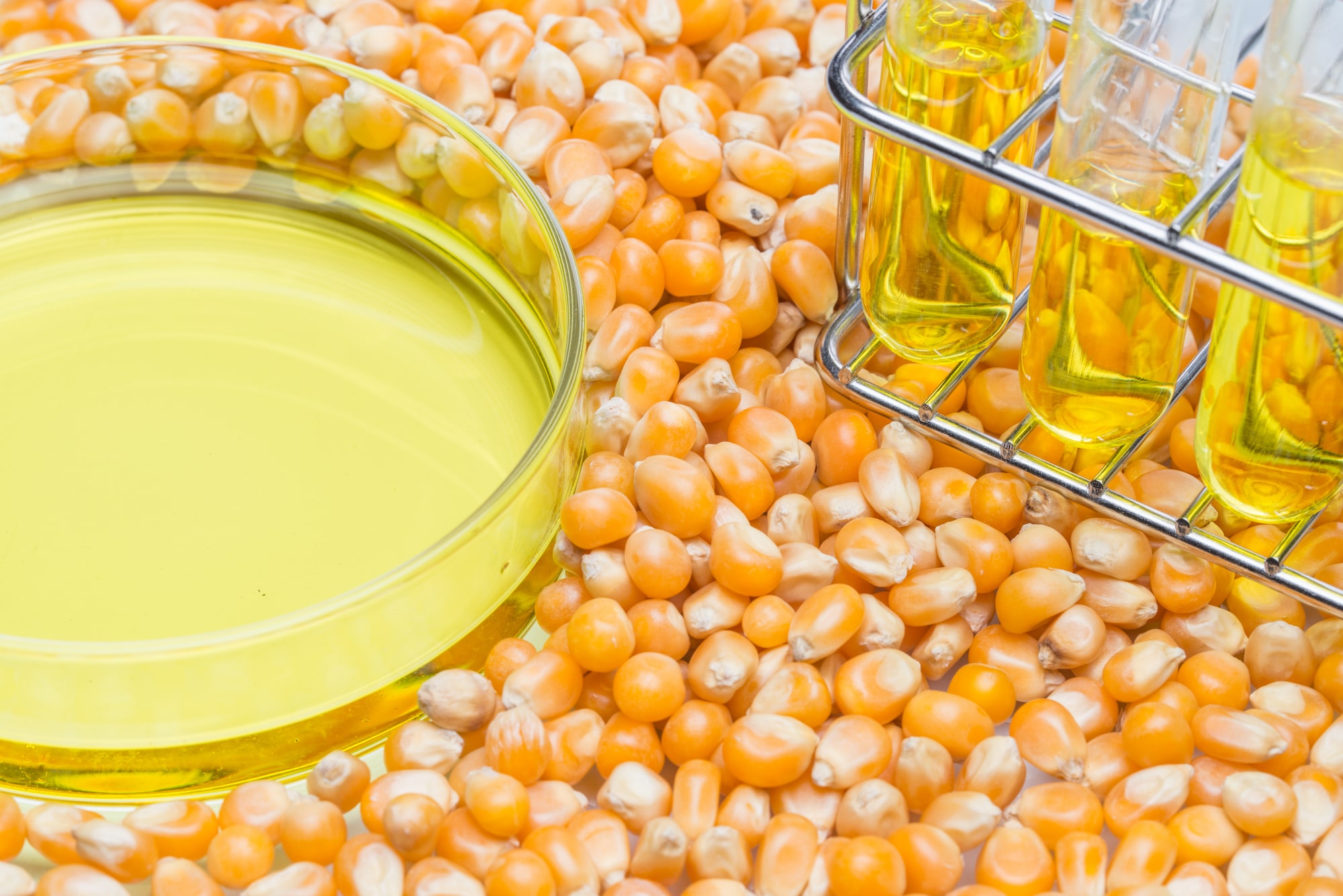Peeking into the production and closed-loop supply chain of Enogen.
In 2011, Syngenta received full deregulation for its Enogen corn amylase event 3272. It launched the product with a promise and a commitment: to give fuel ethanol producers a means to create more value per gallon of ethanol while offering targeted corn growers an opportunity to produce a premium-value specialty crop. However, the commitment of Enogen is what really was different than other traits: keeping the GM Enogen corn contained in a contracted, closed-production system completely isolated from commodity corn’s existing marketing infrastructure.
By almost everyone’s account, that commitment has been fulfilled. The success of the Enogen closed production system is providing the additional benefit of demonstrating that an integrated marketing plan can transfer the added retail value of specialty agricultural products through the supply chain back to the farm gate.
The Enogen corn amylase trait is the first genetically modified output trait in corn for the ethanol industry. The alpha-amylase enzyme found in Enogen grain helps ethanol plants significantly reduce the viscosity of its corn mash and eliminates the need to add a liquid form of the enzyme. This reduction also leads to increased levels of solids loading in the ethanol production process which directly contributes to increased throughput and yield. Lower viscosity results in operational cost savings from reduced natural gas, electricity and water usage. For example, in a 100-million gallon ethanol production facility, the efficiency improvements enabled by the addition of Enogen grain can provide annual savings of 450,000 gallons of water, 1.3 million KWh of electricity and 244 billion BTUs of natural gas. These savings are equivalent to the power needed to heat several thousand homes while reducing the plant’s carbon dioxide emissions by 106 million pounds.
“Early on, one of the things that was different with this closed-loop supply chain vs. the rest of the seed industry is the level of planning it takes to make it work,” says Duane Martin, head of Enogen Marketing and Stewardship. “Typically, if you are a seed retailer or dealer buying seed, you might place a stock order to sell this year and subsequently manage your unsold inventory as returns back to the seed supplier. We don’t do that with Enogen. We know every grower’s needs before selling begins. Our resellers work closely with their farmers and communicate their customers’ needs back to Syngenta. Then, because of the stewardship requirements, we are actually able to track every returned unit of seed. All unused Enogen seed comes right back to Syngenta. We closely track it all. I would say that this level of planning was one of the things that took a while for everybody to get used to as we implemented this program.”
Closed Grain Production System
“Compared to the negative perception that some folks might have had about how the stewardship framework for Enogen would work, it has worked quite well,” Martin says. “For the Enogen growers that participate, most of them find it to be a very manageable system. Ethanol plants like it because they know they have a dependable grain supply. Livestock producers also like it. We have moved from viewing this production system as a limitation to something we see as perhaps a tool that we will use in the future to introduce new value-added traits. I think the perception of this kind of system is changing in agriculture. We see this as the model for introducing more value-added traits and identity preservation in the future.”
Syngenta set out in 2011 to administer the closed-loop isolation plan as a continuation of the procedures established by the USDA for regulated field trials. However, the company soon realized that this was not how to manage regulation at scale.
“Every year, we do our internal audits for stakeholder relations,” says Syngenta Head of Enogen Chris Cook. “We also hire third-party audits. Auditing our data is more than just checking a box. Out of an audit, we can see if there is a gap in the program or if there is something that we should do differently as we go into the next year. We look at the program critically to see what is working and what we need to improve.”

Cook is confident Syngenta has developed a best-in-class identity-preserved program at scale in the grain trade. The program provides a high level of traceability. The company knows when the seed is shipped, where it is stored and where it is planted. All that information is mapped with the mapped fields publicly available to anyone on the planet by simply logging on to Syngenta’s publicly accessible IP360 web page, an online repository of identity-preserved field locations
The vision of IP360 is to provide clarity to identity-preserved stakeholders on the location of contracted fields for use in planting intentions, understanding in-season field locations and provide support to grain merchandisers. IP360 distinguishes different crops via a color-coding system based on information that participants provide. Growers also disclose where Enogen grain or Enogen feed silage is being stored. Grain farmers and the designated ethanol production plant also determine when and where Enogen corn is going to be delivered and used.
“That traceability function is paramount when you start thinking about sustainability,” Cook says. “Without traceability, there is no such thing as sustainability. We are working closely with both the biofuels industry and the livestock production industry. In the beginning, we gave many people angst because this is an identity-preserved crop at scale. Now, after nearly 10 years, people generally acknowledge we are doing a good job, which bodes well to what we are looking at for the future.”
In some cases, grain handlers are integrated into the system. Ethanol growers contract directly with the ethanol plant, although Syngenta maintains an interest in managing the contract. The ethanol plant sets the grain delivery and supply schedule. From year to year, Syngenta continually evaluates the program: is the system continuing to respond to participants’ needs, and how could it be improved? How else might this system be expanded to introduce other traits and grain qualities in other crops?

To Martin, it is a progression. “It started as an attempt to introduce a unique trait and make sure we protect the value of our trait without it detracting from the value of anybody else’s process. It has grown over time to where this looks like a tool that we and others might use to produce something other than No. 2 YSC.”
Enogen is not for everybody. Some growers want to produce at the highest volume to get the lowest per-unit production cost. Just like retail stores, some growers drive the lowest cost while others drive the best value.
“We believe Enogen brings value to the supply chain,” Cook says. “Part of the beauty of the Enogen IP program is that there is an end destination waiting for every acre grown. To that extent, Enogen makes a grower a better marketer. They are thinking that when they put a value-driven crop on their better acres. They want to make sure they maximize the value of that crop. They are watching the month they will market that grain and figuring how they will manage that crop before it gets to market. That naturally leads to doing a better job of getting the best price for their crop. It is more than getting the best price; it includes managing the grain to have the best quality to take to market.
“Communication is paramount. Enogen growers are all trying to produce a good crop. We want to make sure they communicate with their neighbors as much as white corn growers or seed growers communicate with their neighbors. Just to let people know that if you are doing something where you are trying to grow a premium crop that people know that you are doing, not to brag, but to make sure that everybody understands that you are working to maximize value. We have seen that the advent of new technologies in the pesticide world come forward to make sure your neighbors know what is being sprayed is important. It is well beyond Enogen; it is the industry at large that we all need to do a better job of communicating whether we want to or not.”
Future Identity Preserved Applications
What can be done to showcase the story that both the ag production biofuels industries have to tell about how agribusiness produces biofuels and food protein? How can those processes be presented to consumers, beginning at the very front end of the narrative with a description of soil type and the per-acre resources used? The tools to measure and gather this information are already in place. Is it possible to apply the grain identity preservation system being used with Syngenta’s Enogen platform and link it to the vast amount input of production information being captured by various means? Other tools could also come into play: where was the feed produced, where is the animal being taken, what feed went into that animal, where was the grain or the animal processed? Since water is an increasingly precious resource in many regions, would it be possible to indicate the amount of water used to raise or process the animal? How important would this information be to consumers?
“Suddenly, a grand picture begins to emerge where I can envision a soccer mom in San Francisco going into her grocery store where she takes out her phone and scans the product’s QR code to get the story of how that steak was produced, for example. That information could then begin to take on some semblance of a sustainability score. A really useful idea would be to involve more people throughout the integrated supply chain. Let the farmer that grew the grain explain how or where it was grown. That vision is something that I believe we could pull together better than anybody in the industry because of what we are already doing to connect the dots for people,” Cook explains.
Enabling a Premium Market
When you start with consumers, a significant portion are willing to pay a little more for a steak when they can feel good about how it was produced. That added-value must move down through the value chain. Instead of starting on the producer’s end where we create a market after we have grown the grain, what if we start at the very end of the chain with someone who wants to buy that steak or gallon of milk or butter or cheese? Cook asks.
“We can start down there and ask consumers if they are willing to buy something that is a little better,” he says. “We have already seen that with the organic industry and foods that are labeled Organic. Think about the purchase of Whole Foods by Amazon ‚Äì those are not stores selling foods as cheaply as possible. They are selling premium-priced products.”
According to Cook, this shows there is a market for premium products.
“If you can take the pull from that end and work it backward through our chain, it creates more value for every producer from the processor to the livestock producer to the grower who produced the grain or silage that went into the animal,” he says. “I start to link it all together. That is where Enogen has value for Syngenta with its 5% increased efficiency for a niche market. Those are pull-through sales. That is when you can link together all the pieces of the pie.”











